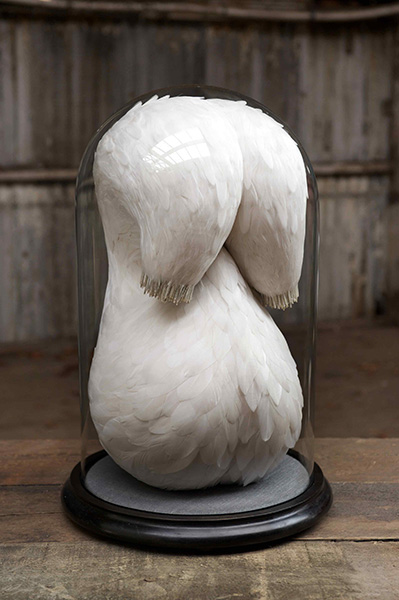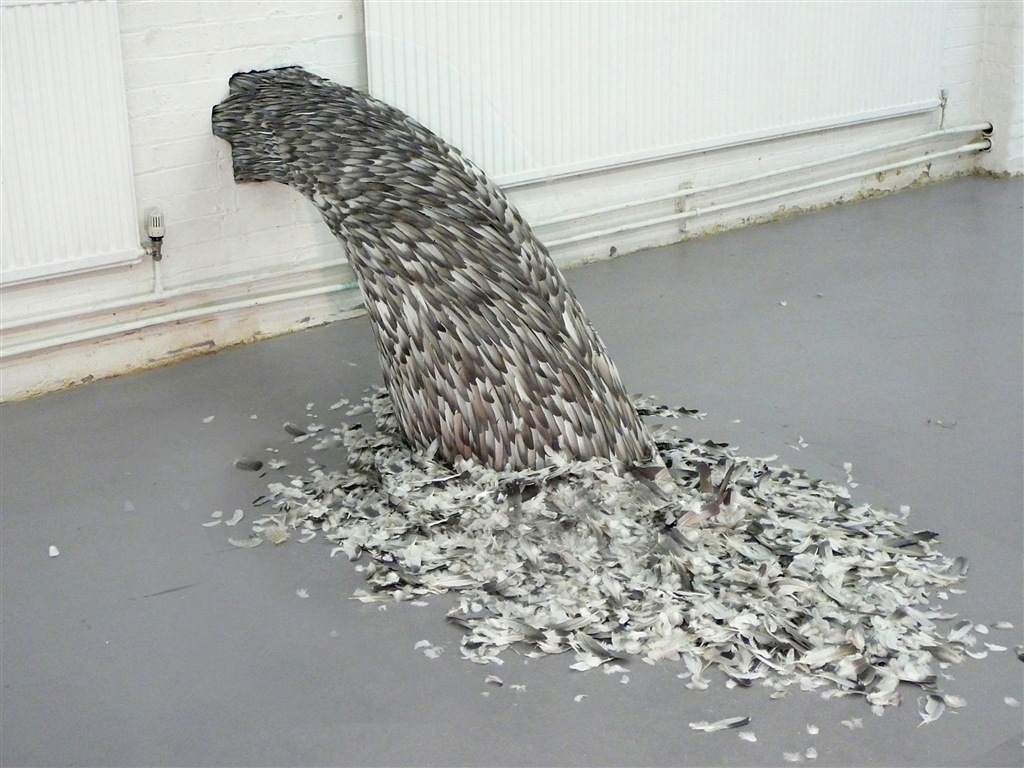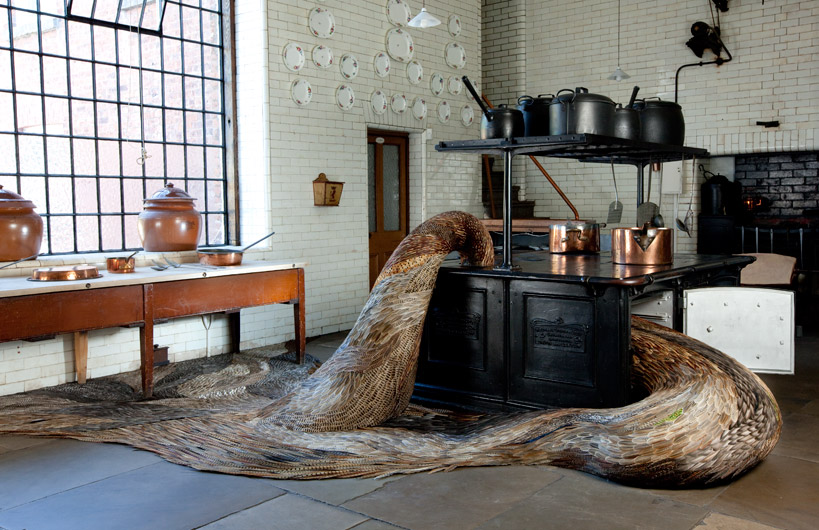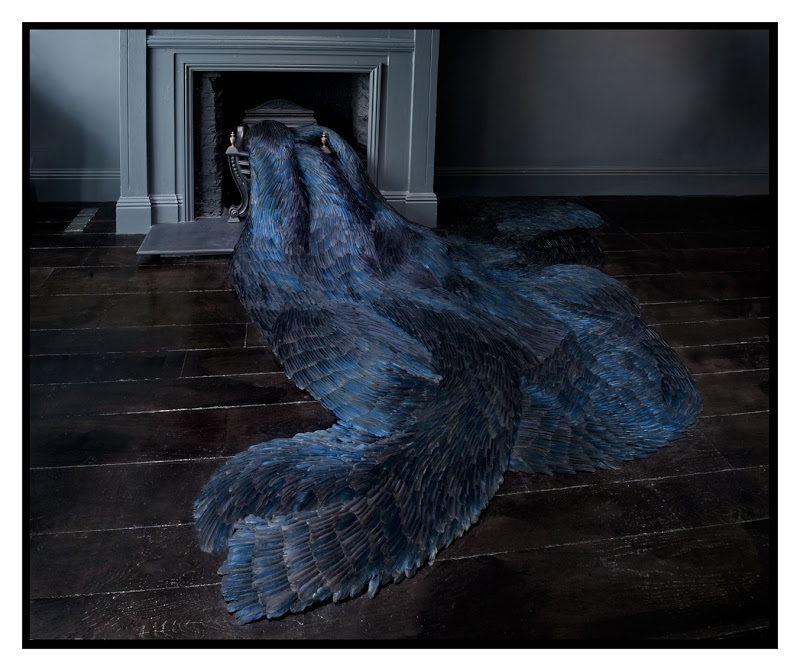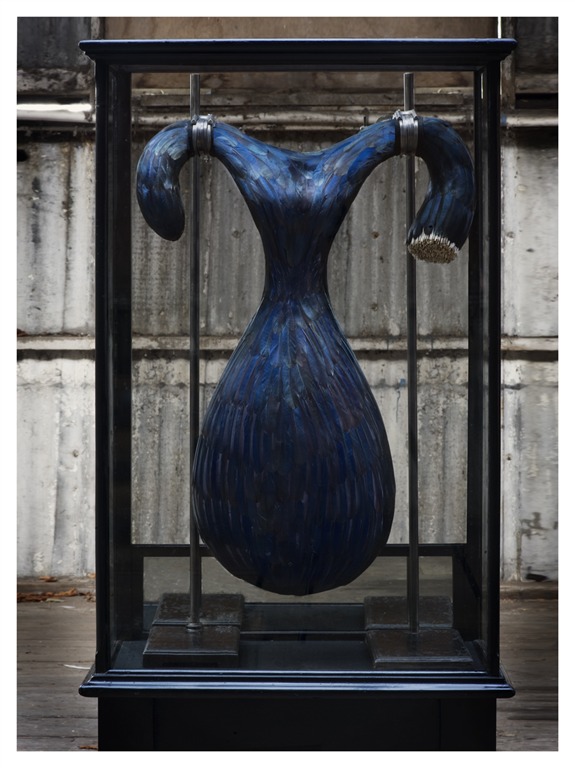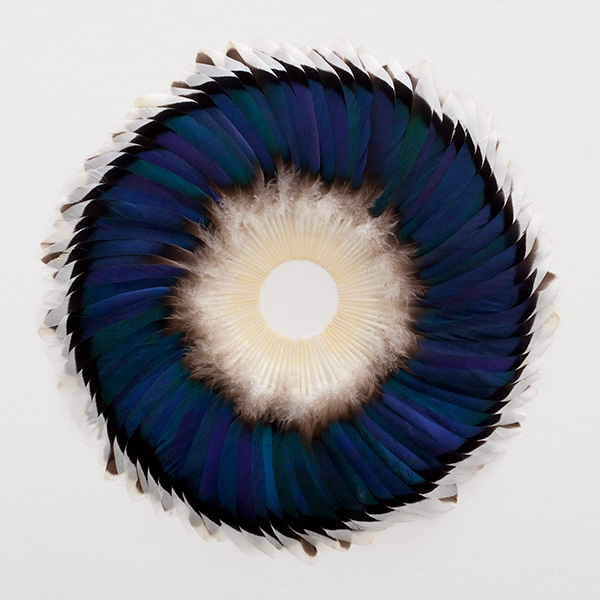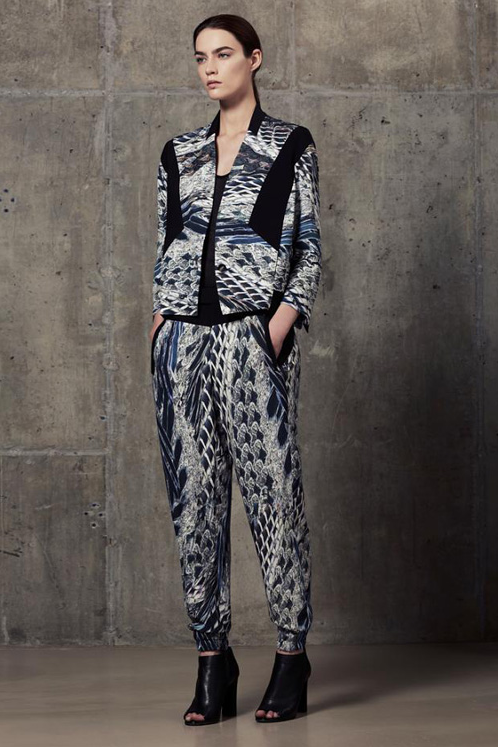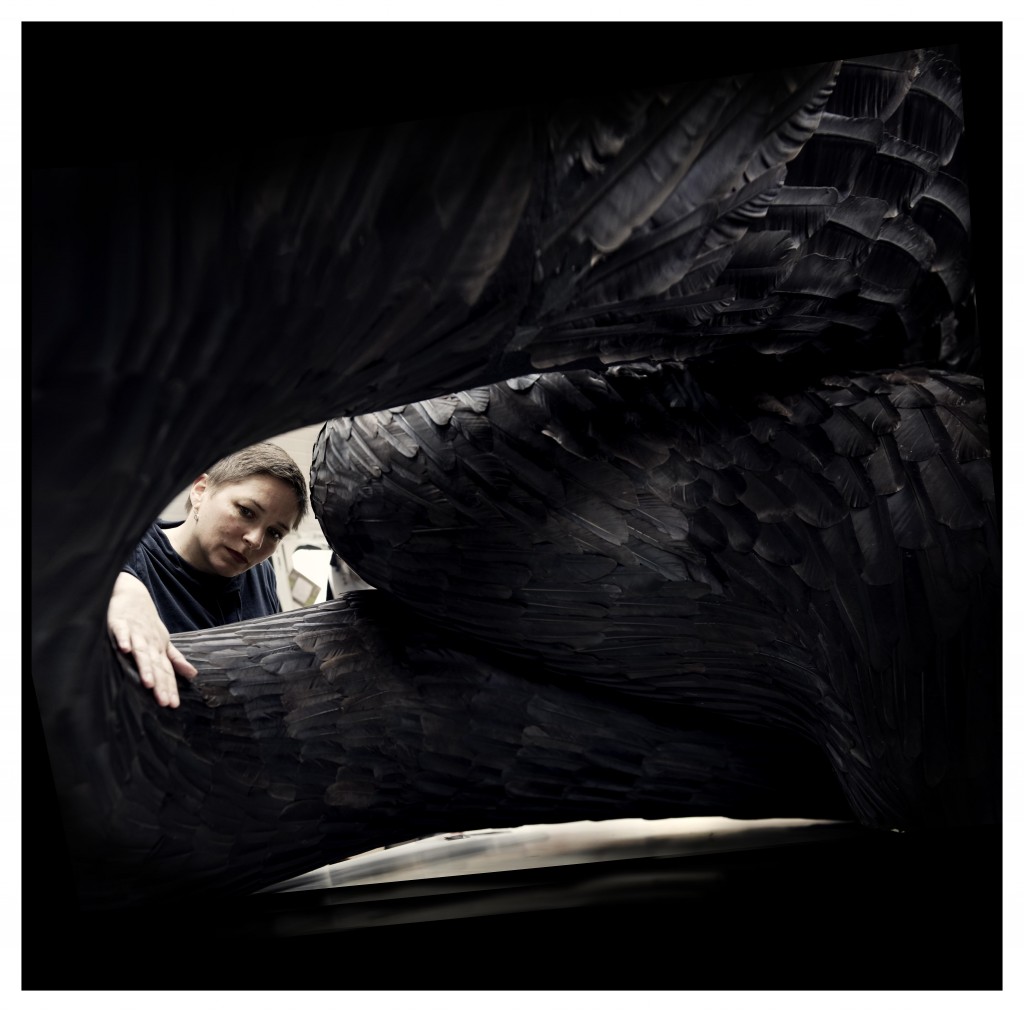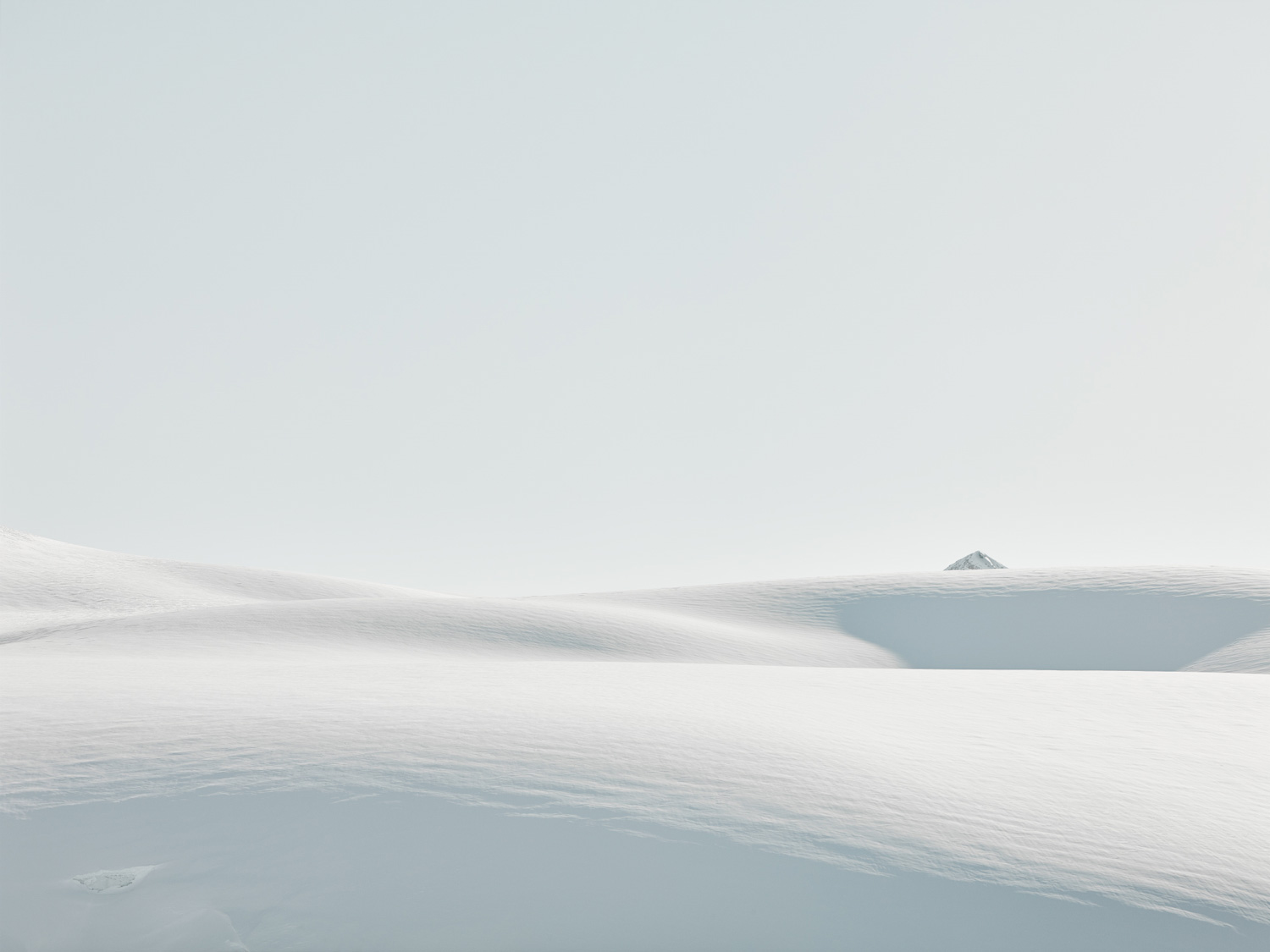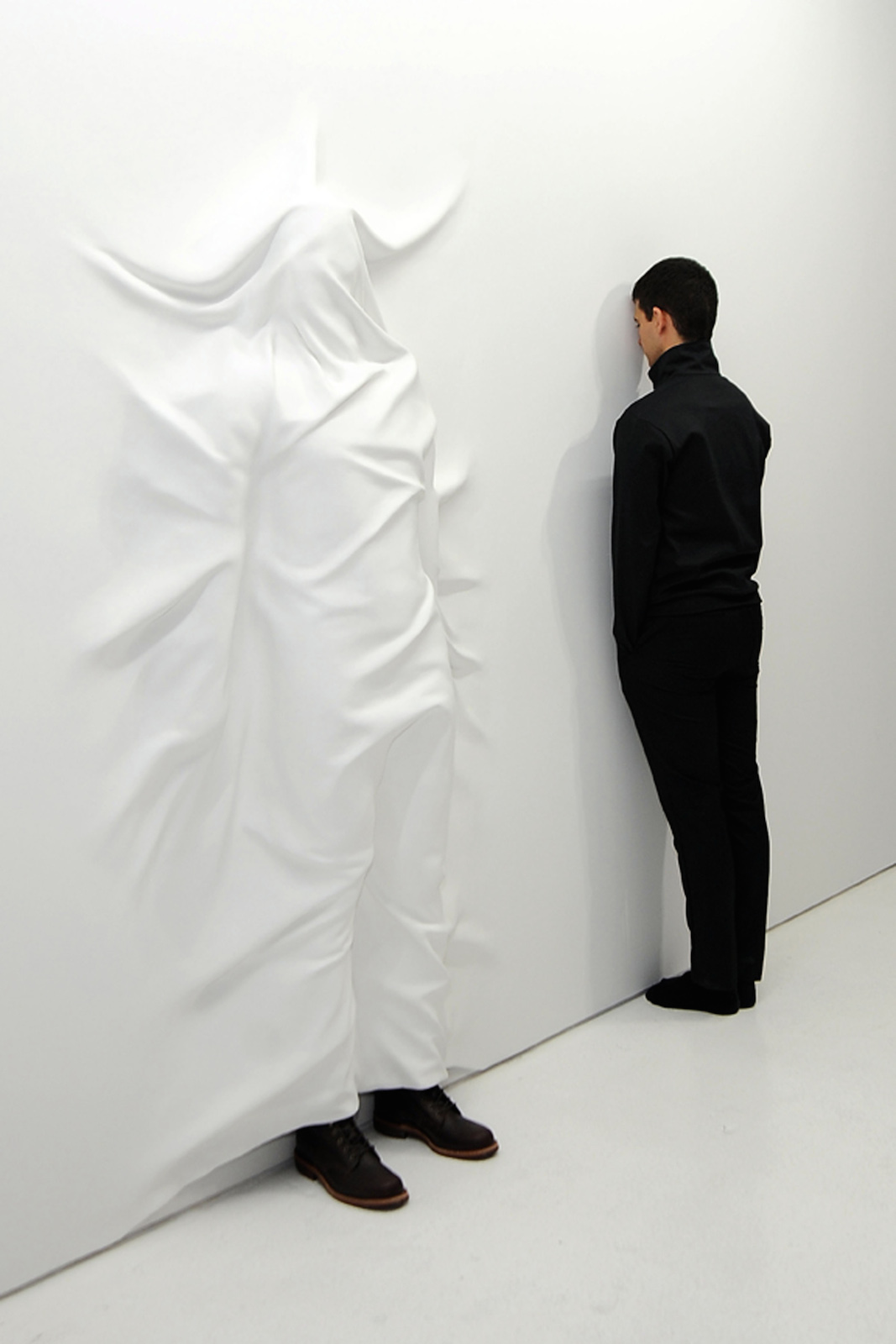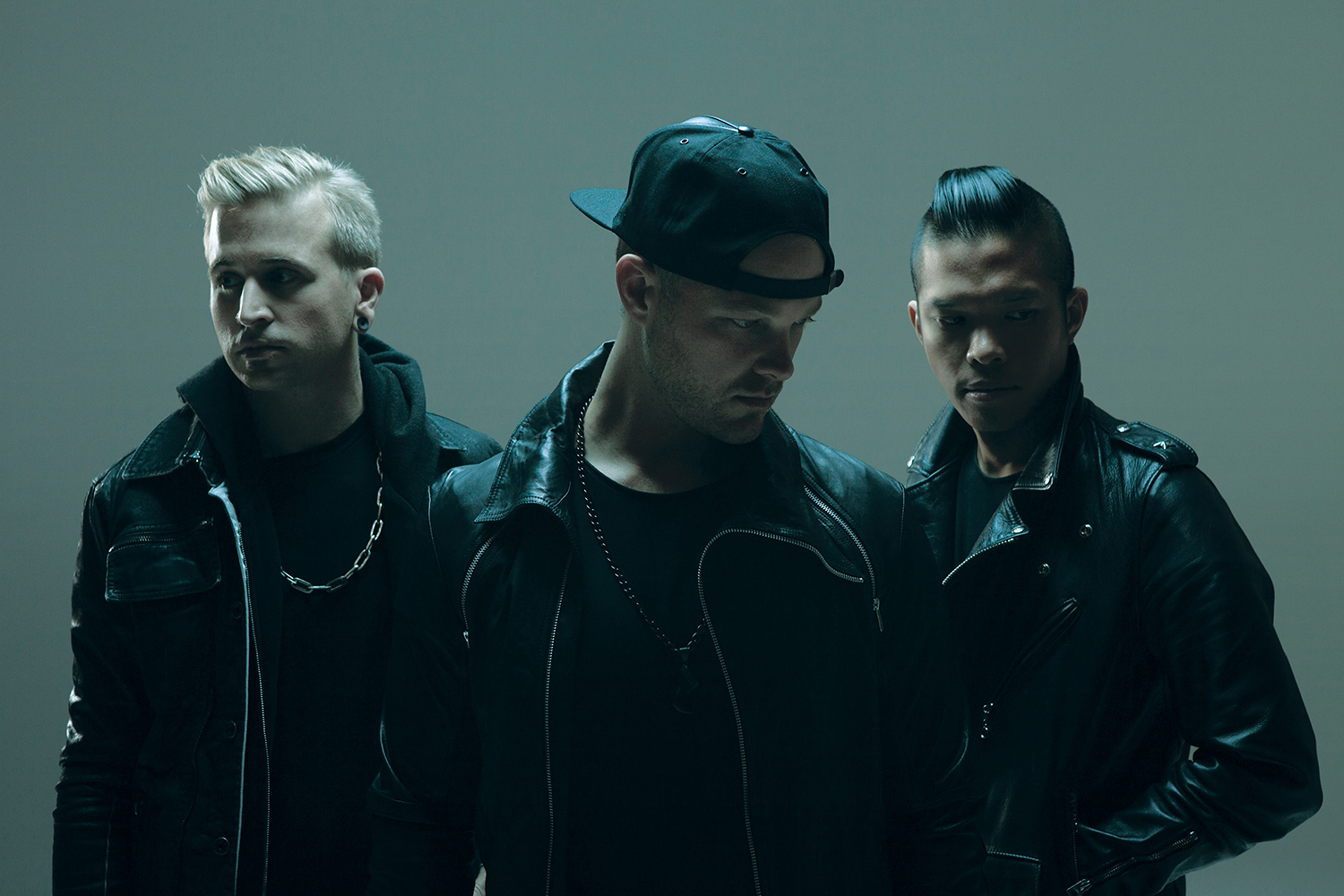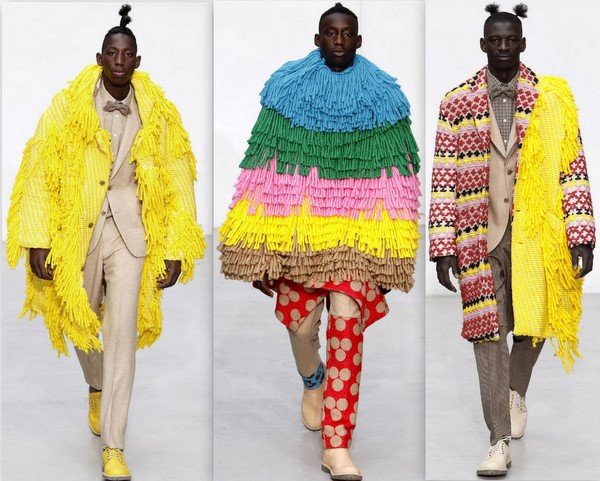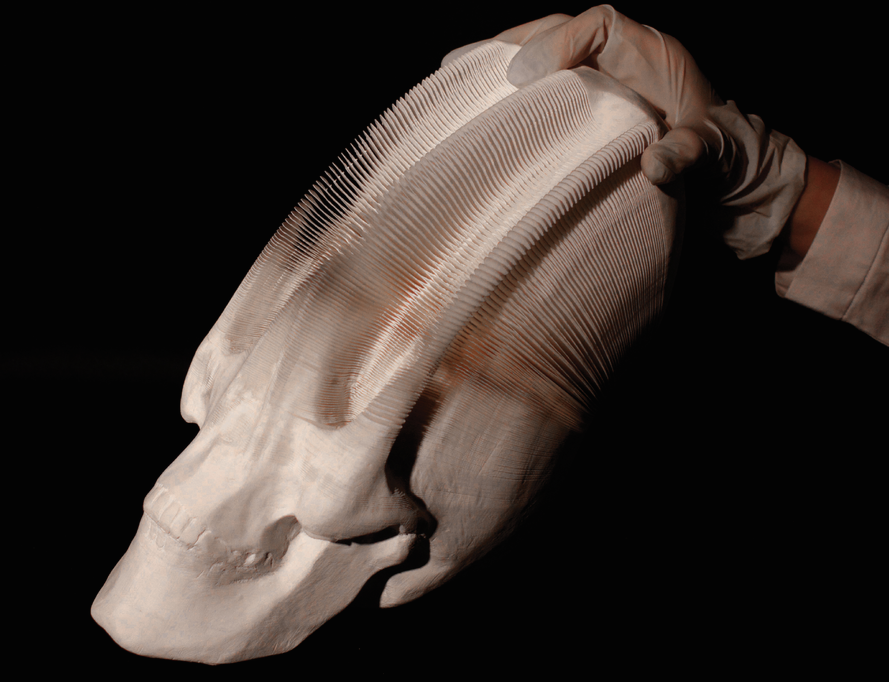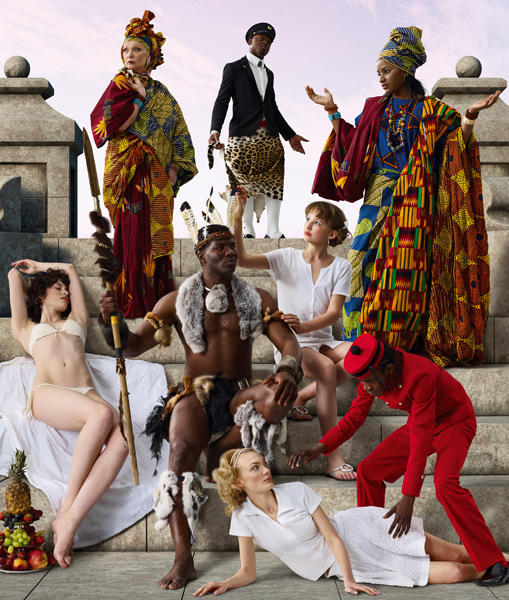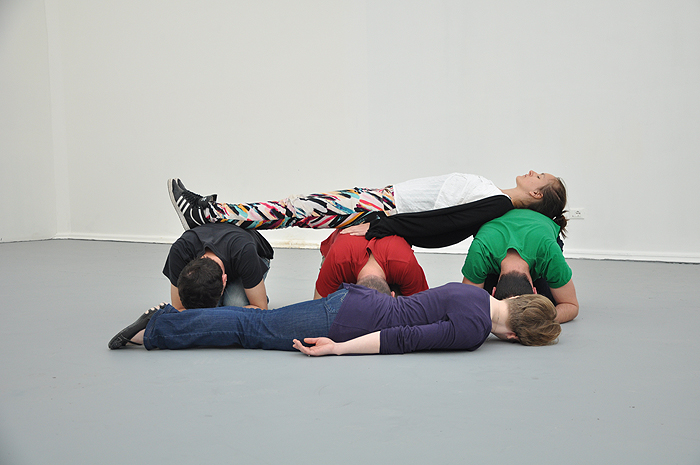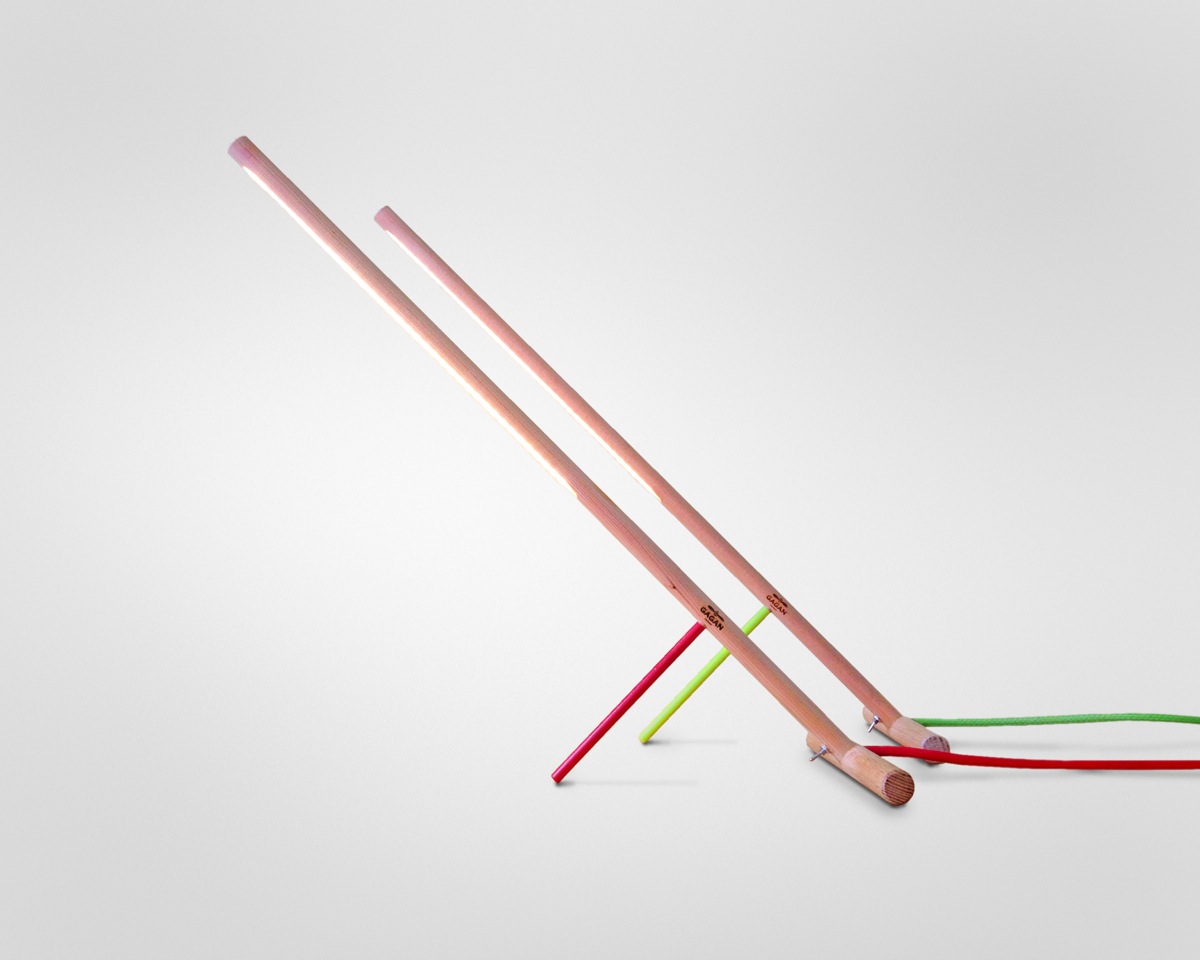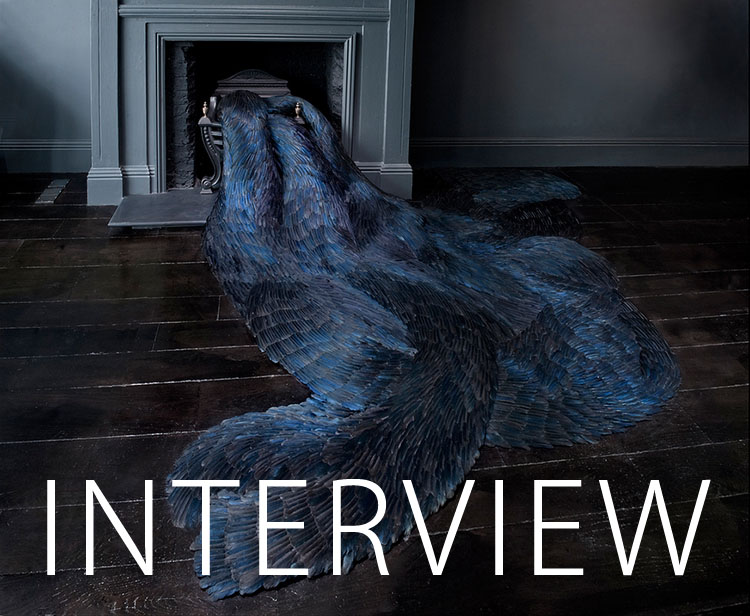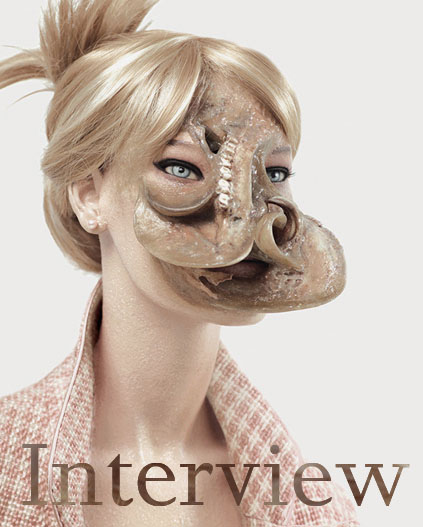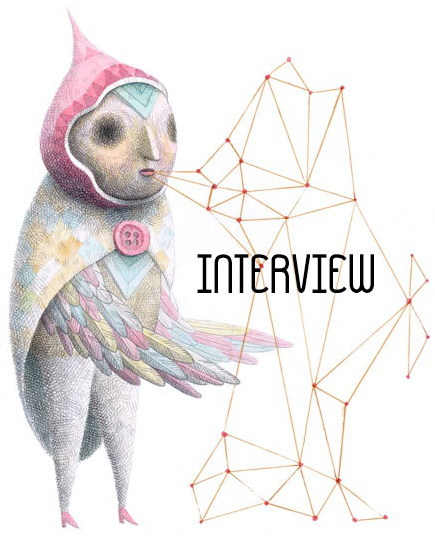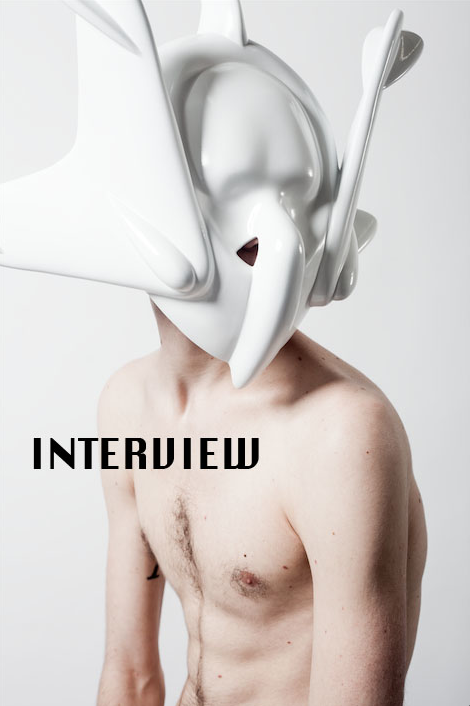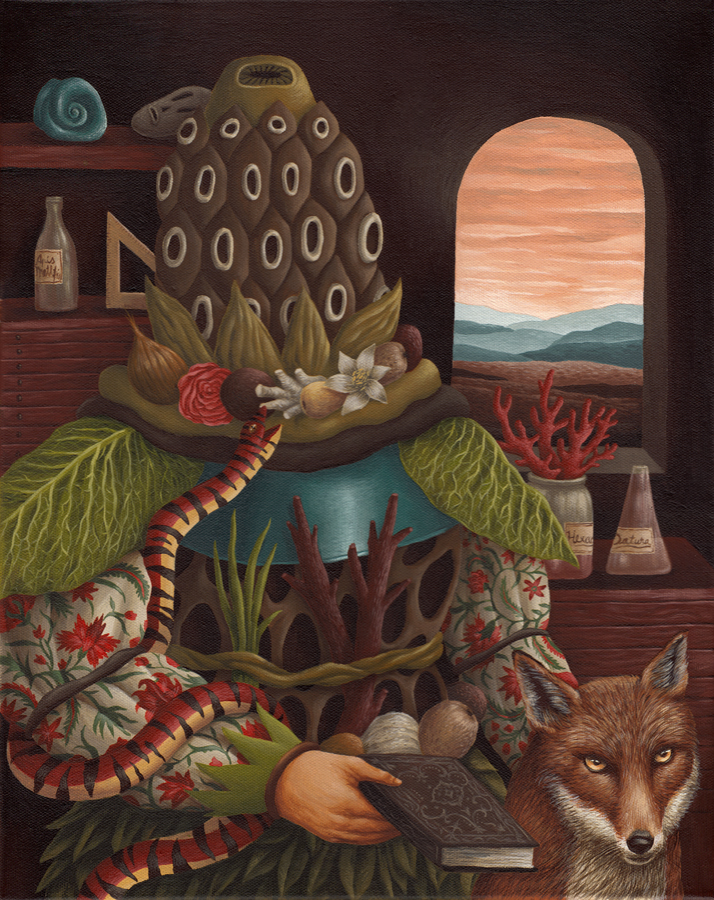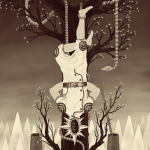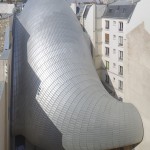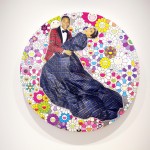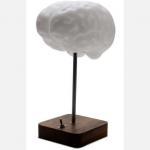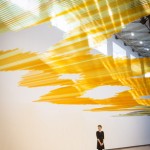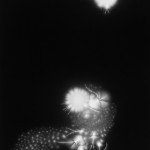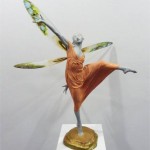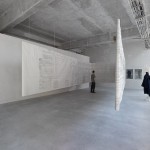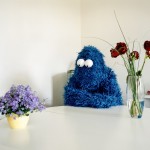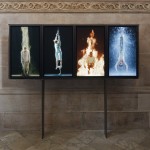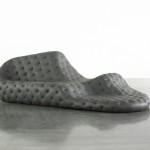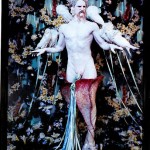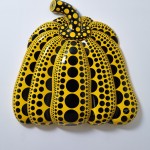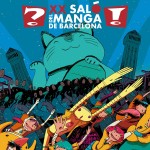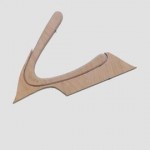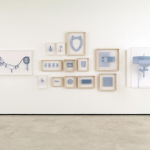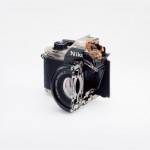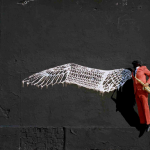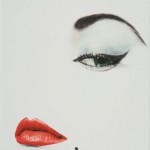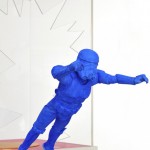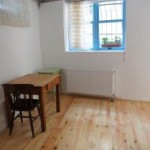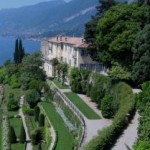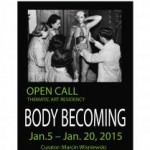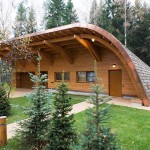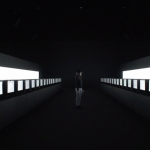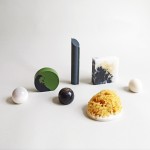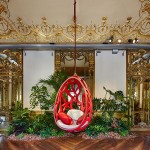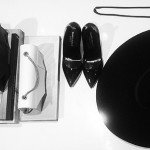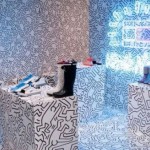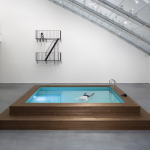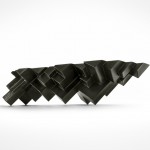INHALE is a cultural platform where artists are presented, where great projects are given credit and readers find inspiration. Think about Inhale as if it were a map: we can help you discover which are the must-see events all over the world, what is happening now in the artistic and cultural world as well as guide you through the latest designers’ products. Inhale interconnects domains that you are interested in, so that you will know all the events, places, galleries, studios that are a must-see. We have a 360 degree overview on art and culture and a passion to share.

Kate MccGwire is an artist who works with organic materials, especially feathers. She is interested in the way beauty and brutality mix in works of art. MccGwire plays with the expectancy of the audience: the feathers transgress their initial state, turning into something that has its own language and energy.
Your work is unsettling, almost surreal and the audience is instantly immersed into this universe. We find that your works are powerful and question the notion of beauty, since feathers are both plain beautiful as well as enchanting. Feathers are now your “trademark”. How was your art looked at in the beginning and how was it received on the art scene?
Before I started working with feathers I was also interested in bone, hair and other natural materials. My installation, Brood, which was made from 20,000 chicken wishbones, was bought by Charles Saatchi during my degree show. It was the work that really launched my career and confirmed my interest in beauty and brutality, the binary forces that exist within nature.
It’s impressive to think that for your art no animals are harmed when there are so many artworks involving animals that question the limits between life and death. Of course, there is probably a lot of work to gather the feathers, I know you always mention that there are some people who have birds and send feathers to you. How was it in the first place when you wanted to convince them about your intentions?
To convince someone to help you it’s very important to start a personal dialogue. I started by writing letters, sending sketches and visiting potential feather donors. The contemporary art scene is a very different world to the pigeon racing association, so it took some explaining, and some still thought I was completely bonkers, but many were happy to help. It’s been almost 8 years since I wrote my first letter and I’m still in touch with many of them now.
You said that you were thinking of making an installation with all the letters you received from these people. We imagine that they must be something one would find interesting to read! Can you give us one example that amazed you the most?
All the letters have been special and I feel very privileged that over the years people have shared such personal stories with me; one pigeon fancier used to send me lovely cards from him and his wife, always with a note about what they’d been up to and how the birds were doing and if they’d won any races. One day I got a letter, which said that his wife was ill but that the birds were fine… the next letter just had his signature on the end and she had passed away… the next, how he missed her and the final one recently sent saying that he was now too elderly to look after his birds and he was going to pass them on to a friend who had agreed to continue to send me feathers.
Also, how is it to work with a material that cannot be bought from a store and that depends on other people and on nature?
It certainly makes collecting more difficult but it means that I have to think inventively – I have to get people engaged in my work and I in turn need to understand theirs. I now have attended quite a few pigeon releases (it’s an amazing sight seeing 10,000 birds released simultaneously) and have begun to understand the cycle and know that pigeons mainly moult in April and October so I write to the pigeon racers during those months. It’s a cycle of regeneration and persuasion.
Your works look as if they are alive, as if they are living animal creatures, and the sinuous forms seem to have no end and no beginning. Some are fluid-like. I mention here Evacuate, where feathers come out of a stove. There is also Sluice, where feathers come from a pipe, as if it were water. This shows how versatile this material is. What is it like to work with a material that has such a powerful background and when did you discover its potential?
My studio is a Dutch Barge on the River Thames, so I’m totally aware of the seasons, nature and temperament of the river, and that really feeds into what I make. I started by collecting the feathers on the bank near my boat, after a while I had enough to start playing with them, layering, experimenting. Like the river itself, natural materials have a sort of siren-like beauty, and I saw the possibility in using the medium to create something powerful.
It’s obvious that you are influenced by nature and you mention that you moved your studio on the Thames. How does it inspire you and what has changed since you’ve moved?
Certainly the powerful force and flow of the river makes a constant impression on my thought processes. I’m interested in the exquisite patterning in the water, which appears momentarily and then is gone. Nature is all around the studio, we see the lifecycle of the river birds, the laying of eggs, the hatching of ducklings and the birds of prey who eat the ducklings, it’s a cycle of life, a fascinating but brutal world.
Your works conquer the exhibition space and they instantly change the environment. How do you relate to space?
I love the challenge of making within different architectural spaces, and certainly my previous training in design is useful in being able to plan and envisage the work. I have a good feeling for space, and first let the building guide the work, so that eventually the work will impose upon the space.
There is something architectural about your work, and it can be seen in the way you construct your works and in the way you make sketches. Where does this trait come from?
I used to work as an architectural visualizer so I’m very happy to work on both a 2D and 3D scale. Sketches are a fantastic tool for trying new things and being able to show people what I am trying to achieve. The freedom of drawing is a great compliment to the permanence of sculpture.
You work with feathers coming from pheasants, chickens, turkeys, mallard, goose, peacock, woodcock, but you constantly talk about pigeons and crows. Why are you specifically interested in these two birds?
They are birds with a particularly strong cultural identity. The crow can be seen as a bad omen, while the pigeon is called ‘a rat with wings’. It’s these associations that I enjoy exploring and drawing attention to in my work.
I know you don’t like to tell too much about the work process, which makes it even more interesting. But do you have an assistant or you work all by yourself? And why?
I like a little mystery around it; all art is an illusion after all. I have assistants to facilitate what I do: to prepare, sort and trim the feathers, and then I apply them on the form; I wouldn’t be able to achieve the scale of my work without them. It’s a close relationship and one of mutual respect and trust, I teach them my method and they in turn don’t use it in their own work.
Do you think this is a period when you are interested in feathers or did you find the perfect medium for you?
I am drawn towards natural materials because they have their own language. We have a relationship with feathers, bones and hair, which is universal yet carries personal resonance. I am sure I will use other materials over the course of my career but I haven’t exhausted all I want to do with feathers yet…
How do you feel about inspiring other artists? And here I must mention Helmut Lang, who created a fashion collection being inspired by your works.
It’s always a compliment to inspire other artists and the link between my work and fashion is something I’ve not yet explored personally. However I’m leaning towards the possibility of doing a full-scale collaboration with a designer one-day.
Your works are a sort of surrealist fairy-tale. Is there an area where you inspire from or is there something in your background that inspires you?
For me it’s about being intrigued by the body; by playing with what is known and making it strange. It’s a amalgamation of forms; beast, bird, hunter and prey.
It’s a busy year for you since you’ll be present in a lot of exhibitions. Tell us about them.
I have got a very busy year ahead; Birds of Paradise (including my largest installation to date) has just opened at MoMu, Antwerp until 24th of August. My solo show Lure at The Beaney House of Art & Knowledge will open on March 29th, and I also have works in group exhibitions in Art and Alchemy, Museum Kunstpalast, Düsseldorf 5th April -10th August 2014 and The Wonder of Birds at Norwich Castle Museum opening 24th of May 14th of September and then a solo presentation at Musee de la Chasse et de la Nature in Paris from November 2014 until January 2015.
BIRDS OF PARADISE
MoMu, Antwerp
20th March – 24th August 2014
SOLO SHOW
The Beaney, House of Art & Knowledge, Canterbury
29th March – 27th April 2014
ART AND ALCHEMY
Museum Kunstpalast, Düsseldorf
5th April -10th August 2014
THE TOURISTS
Felbrigg Hall, National Trust – Norfolk CAS and Arts Council
1st May – 31st October 2014
THE WONDER OF BIRDS,
Norwich Castle Museum & Art Gallery
24th May – 14th September 2014
Kate MccGwire for Inhale, March 2014



